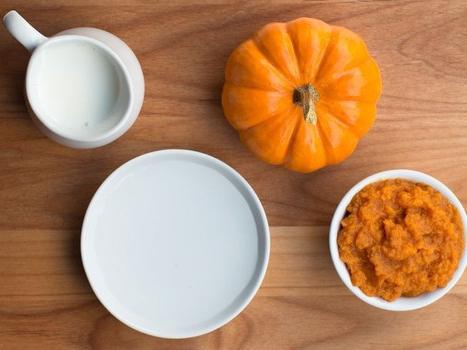How to determine the ripeness of a pumpkin in appearance?
Pumpkin is a real garden queen. Bright orange, pot-bellied, sunny - it pleases only one of its kind. And the taste is just amazing! From a pumpkin prepare hundreds of different dishes - juice, jam, fritters, cereals, pickles, casseroles, candied fruits and many other things. But in order to cook all these dishes, you need a good ripe pumpkin. Unripe fruit is not so good in taste, and the flavor is much weaker. So, how do you know the ripeness of a pumpkin? It turns out that there are many signs of maturity.

How to determine the ripeness of a pumpkin on the tail?
Here the same principle works as for the nearestrelatives of pumpkins - watermelons. The dry tail says of maturity, and the green tail or obvious signs of trimming of the whip report that the vegetable was prematurely removed from the garden. Special attention should be paid to the peduncle - it should be dense, firm and externally reminiscent of cork.

How to determine the ripeness of a pumpkin by the color and density of the peel?
In a ripe pumpkin, the skin should be dense. There is a good way to check - press the tip of the nail on the skin. If it is easily damaged, it means that the berry is still immature. However, a very dense, practically "wooden" peel is also not a very good sign, since such a pumpkin will be overripe. The presence of natural wax on the surface of the berry speaks of ripeness, in addition, such natural protection ensures a long-term preservation. Maturity is also indicated by the clearly visible pattern of veins on the skin.
How to determine the ripeness of a pumpkin by its size?
Some buyers suggest that maturityPumpkin can be determined by its size and weight - the larger the fruit, the more ripe it will be. In fact, this is not so. Weight and size depend, first of all, on the variety and the growing conditions - there are large pumpkins, medium and very small. However, when buying, you should pay attention to the size. The huge pumpkins lying on the counter, most likely, belong to the fodder varieties, and their taste is not up to par. They are either too dry or watery, and the smell is not so expressive. The optimal weight for the fetus is 3-5 kg. Before buying a pumpkin must necessarily weigh - it is usually much heavier than it seems at first glance.

How to determine the ripeness of pumpkin in a cut form?
It is not recommended to buy a cut pumpkin, sohow most often it is impossible to know who and in what conditions this pumpkin was cut, and what sanitary norms were violated at the same time. However, some people prefer to buy it just cut, because in this form you can accurately know the degree of maturity. The color of a good ripe pumpkin is rich, bright, yellow or orange. The more intense the color of the pulp, the more vitamin A it contains, which means it will not only be delicious, but also useful. Experienced buyers have a little secret when buying pumpkins - they always try the seeds. If they are immature, it means that the whole berry did not have time to ripen.
And finally, the last secret is a good ripeThe pumpkin always pleases the eye in any form - at least whole, though cut. If something confuses you in its appearance, then, most likely, something is wrong with this berry.
</ p>



